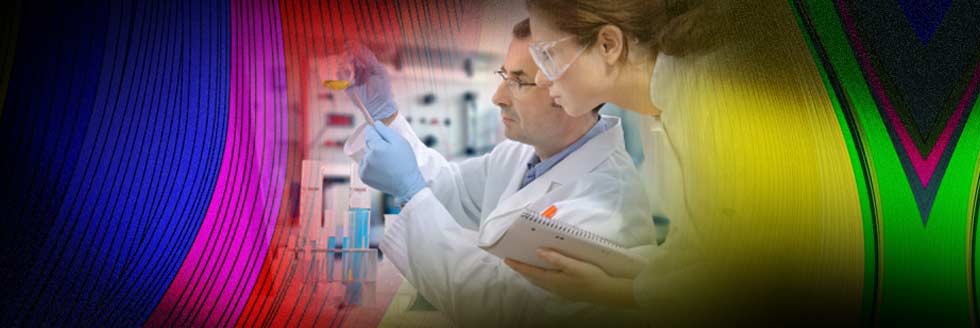Disclaimer
Daylight fluorescent pigments are luminescent materials that require no artificially generated energy to reflect colored light and give off fluorescent light. Fluorescent pigments are composed of dyed organic polymers that are formulated to be solvents for the fluorescent dyestuff.
In contrast to ordinary colors, light emitted from fluorescent color add to the light returned by simple reflection to give the glow characteristic of daylight-fluorescent materials. This article gives history and the theory behind fluorescent dyes. Most dyes are manufactured by bulk pigment polymerization. Many dyes are based on formaldehyde, but non-formaldehyde dyes have been developed in response to environmental concerns. Daylight fluorescent dyes are considered nontoxic. Their uses are many because of their extremely high visibility and ability to attract attention. Among the many uses are in advertising, road safety, protective clothing, optical sensing in coding and tracing of documents, inks, biomedical applications, and consumer products such as toys, paints, pens, and bottles. In contrast to ordinary colors, light emitted from fluorescent color add to the light returned by simple reflection to give the glow characteristic of daylight-fluorescent materials. This article gives history and the theory behind fluorescent dyes. Most dyes are manufactured by bulk pigment polymerization. Many dyes are based on formaldehyde, but non-formaldehyde dyes have been developed in response to environmental concerns. Daylight fluorescent dyes are considered nontoxic. Their uses are many because of their extremely high visibility and ability to attract attention. Among the many uses are in advertising, road safety, protective clothing, optical sensing in coding and tracing of documents, inks, biomedical applications, and consumer products such as toys, paints, pens, and bottles.
In contrast to ordinary colors, light emitted from fluorescent color add to the light returned by simple reflection to give the glow characteristic of daylight-fluorescent materials. This article gives history and the theory behind fluorescent dyes. Most dyes are manufactured by bulk pigment polymerization. Many dyes are based on formaldehyde, but non-formaldehyde dyes have been developed in response to environmental concerns. Daylight fluorescent dyes are considered nontoxic. Their uses are many because of their extremely high visibility and ability to attract attention. Among the many uses are in advertising, road safety, protective clothing, optical sensing in coding and tracing of documents, inks, biomedical applications, and consumer products such as toys, paints, pens, and bottles.



